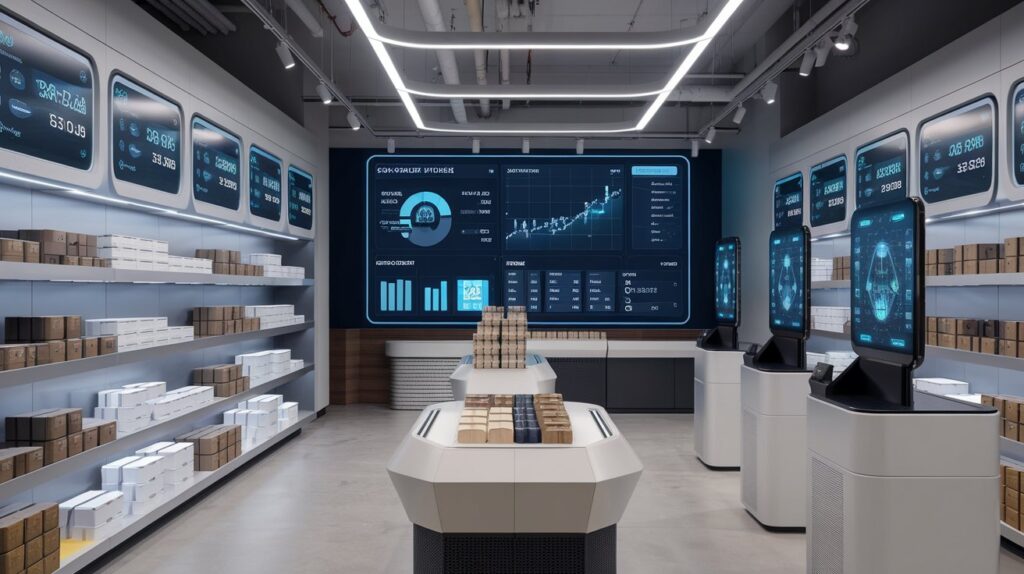The retail industry has undergone a seismic transformation over the past decade, driven by advancements in technology and the increasing demand for personalized, efficient, and seamless shopping experiences. Among the most impactful innovations is machine learning (ML), a subset of artificial intelligence (AI) that enables systems to learn from data and improve over time without explicit programming.
Machine learning applications in retail are reshaping how businesses operate, interact with customers, and optimize their supply chains. This article explores the various ways machine learning is revolutionizing the retail sector, from personalized marketing to inventory management, and how these applications are creating a more data-driven and customer-centric industry.
1. Personalized Customer Experiences
One of the most significant applications of machine learning in retail is the ability to deliver highly personalized customer experiences. In today’s competitive market, consumers expect brands to understand their preferences and cater to their individual needs. Machine learning algorithms analyze vast amounts of customer data, including browsing history, purchase behavior, and demographic information, to create tailored recommendations and marketing campaigns.
For example, e-commerce giants like Amazon and Netflix use recommendation engines powered by machine learning to suggest products or content based on a user’s past interactions. These systems use collaborative filtering, natural language processing (NLP), and deep learning techniques to predict what a customer might like, increasing engagement and conversion rates.
In physical stores, machine learning is also being used to enhance the shopping experience. Smart mirrors in fitting rooms, for instance, can suggest complementary items based on the clothing a customer is trying on. Similarly, personalized discounts and offers can be sent to shoppers’ smartphones in real-time, encouraging them to make a purchase.
2. Demand Forecasting and Inventory Management
Accurate demand forecasting is critical for retailers to optimize inventory levels, reduce waste, and ensure product availability. Machine learning algorithms excel at analyzing historical sales data, seasonal trends, and external factors like weather or economic conditions to predict future demand with remarkable precision.
For instance, Walmart uses machine learning to forecast demand for thousands of products across its stores. By analyzing data from multiple sources, including point-of-sale systems, social media, and even local events, Walmart can adjust its inventory levels in real-time, minimizing stockouts and overstock situations.
Machine learning also plays a crucial role in supply chain optimization. Retailers can use predictive analytics to identify potential bottlenecks, optimize delivery routes, and improve warehouse operations. This not only reduces costs but also ensures that customers receive their orders on time, enhancing overall satisfaction.

3. Dynamic Pricing Strategies
Pricing is a key factor in a customer’s purchasing decision, and retailers are increasingly turning to machine learning to implement dynamic pricing strategies. Dynamic pricing involves adjusting prices in real-time based on factors such as demand, competition, and inventory levels.
Machine learning algorithms can analyze vast amounts of data to determine the optimal price for a product at any given moment. For example, airlines and ride-sharing services like Uber have long used dynamic pricing to maximize revenue. In retail, companies like Amazon use machine learning to adjust prices millions of times a day, ensuring they remain competitive while maximizing profitability.
Dynamic pricing is particularly useful during peak shopping seasons, such as Black Friday or holiday sales, when demand fluctuates rapidly. By leveraging machine learning, retailers can strike the perfect balance between attracting customers and maintaining healthy profit margins.
4. Enhanced Customer Service with Chatbots and Virtual Assistants
Customer service is a cornerstone of the retail experience, and machine learning is transforming how retailers interact with their customers. AI-powered chatbots and virtual assistants are becoming increasingly sophisticated, capable of handling a wide range of customer inquiries and providing personalized support.
These systems use natural language processing (NLP) to understand and respond to customer queries in real-time. For example, Sephora’s chatbot on Facebook Messenger can help customers find products, book appointments, and even provide makeup tutorials. Similarly, H&M’s virtual assistant on its website can suggest outfits based on a customer’s style preferences.
By automating routine tasks, chatbots free up human agents to focus on more complex issues, improving efficiency and reducing response times. Moreover, machine learning enables these systems to learn from every interaction, continuously improving their accuracy and effectiveness.
5. Fraud Detection and Prevention
Retailers face significant challenges when it comes to fraud, particularly in the e-commerce space. Machine learning is proving to be a powerful tool in detecting and preventing fraudulent activities, such as payment fraud, account takeovers, and return fraud.
Machine learning algorithms can analyze transaction data in real-time, identifying patterns and anomalies that may indicate fraudulent behavior. For example, if a customer suddenly makes a large purchase from a new device or location, the system can flag the transaction for further review. By detecting fraud early, retailers can minimize losses and protect their customers’ sensitive information.
Additionally, machine learning can help retailers identify and address vulnerabilities in their systems, reducing the risk of future fraud. This not only enhances security but also builds trust with customers, who are increasingly concerned about the safety of their data.
6. Visual Search and Image Recognition
Visual search is another exciting application of machine learning in retail. By leveraging image recognition technology, retailers can allow customers to search for products using images rather than text. For example, a customer can upload a photo of a dress they like, and the system will identify similar items available in the retailer’s inventory.
Pinterest’s visual search tool is a prime example of this technology in action. Users can select specific elements of an image to find related products or ideas. Similarly, ASOS and IKEA have integrated visual search into their apps, making it easier for customers to find what they’re looking for.
Image recognition is also being used in physical stores to enhance the shopping experience. For instance, smart shelves equipped with cameras can monitor inventory levels and detect when products need to be restocked. This not only improves efficiency but also ensures that customers always find what they need.
7. Sentiment Analysis and Customer Feedback
Understanding customer sentiment is crucial for retailers looking to improve their products and services. Machine learning enables retailers to analyze customer feedback, reviews, and social media posts to gauge public opinion and identify areas for improvement.
Sentiment analysis, a subset of NLP, involves using machine learning algorithms to determine whether a piece of text expresses positive, negative, or neutral sentiment. For example, a retailer can analyze product reviews to identify common complaints or trends, allowing them to address issues proactively.
By leveraging sentiment analysis, retailers can gain valuable insights into customer preferences and pain points, enabling them to make data-driven decisions that enhance the overall shopping experience.
8. Augmented Reality (AR) and Virtual Try-Ons
Augmented reality (AR) is another area where machine learning is making a significant impact in retail. AR allows customers to visualize products in their real-world environment or try them on virtually before making a purchase.
For example, furniture retailers like IKEA and Wayfair use AR to let customers see how a piece of furniture would look in their home. Similarly, beauty brands like L’Oréal and Sephora offer virtual try-on features that allow customers to test makeup products using their smartphone cameras.
Machine learning enhances these experiences by improving the accuracy and realism of AR applications. For instance, facial recognition algorithms can ensure that virtual makeup is applied correctly, while object detection algorithms can accurately place virtual furniture in a room.
Conclusion
Machine learning is undeniably transforming the retail industry, enabling businesses to operate more efficiently, understand their customers better, and deliver exceptional shopping experiences. From personalized recommendations and dynamic pricing to fraud detection and augmented reality, the applications of machine learning in retail are vast and varied.
As technology continues to evolve, retailers that embrace machine learning will be better positioned to thrive in an increasingly competitive and data-driven market. By leveraging the power of machine learning, retailers can not only meet but exceed customer expectations, driving growth and innovation in the industry.











